
Montreal’s summer pop-up events: from food festivals and live music to urban beaches, see a city transformed by the heat
Free of its winter shackles, Montreal becomes an almost tropical city where life is lived outdoors and empty spaces turn into pop-up cafes, bars, cabarets and even beaches. We take a look at some of the most popular
Montreal’s winters are as cold as Siberia. The poet and songwriter Leonard Cohen – a prodigal son honoured by two giant murals in the city’s streets – once wrote about the season’s passing: “In Montreal, spring is like an autopsy. Everyone wants to see the inside of the frozen mammoth.”
When the days grow long and the weather warm, Montreal transforms itself into something unrecognisable to its winter self: an almost tropical city where life is lived outdoors, where the streets fill with bicycles, and vacant lots are turned into ephemeral cafes, bars, cabarets and even beaches that are designed to last only as long as the summer heat.
Deep dive into Borneo’s wild heart with these five exciting river trips
On a recent Saturday evening along the St. Lawrence River, a DJ spun remixed Brazilian music over a patch of land that is fenced off and abandoned during the colder months. Three years ago, a group of designers got together to transform that land into the now annual Village au Pied-du-Courant, a quirky, colourful amusement park with an urban beach, live music, street food, cocktails and space for people to hang out and relax. Here, children from the surrounding neighbourhood play basketball while groups of friends play pétanque, the less uptight French version of bowls. Access is free all summer.
“Every year has been better than the last,” says event co-founder Maxim Bragoli. Montreal is famous for its summer festivals, from the Montreal International Jazz Festival to the Just for Laughs comedy bonanza, but Bragoli and his friends felt there weren’t enough places for informal urban play. From the onset, they wanted the village to look fun. “We love kitsch, wood, colour, greenery, neon and recycled material,” Bragoli says. “We want to create something convivial and human.”
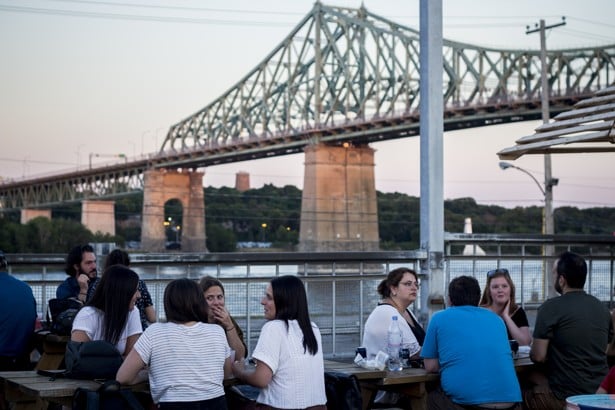
That ethos has spread across the city. Between the festivals, street fairs and new pop-up spaces inspired by the Village au Pied-du-Courant, the summertime energy in Montreal is irrepressible. “When these things happen, the city life becomes much more human,” says Thien Vu Dang, a filmmaker who was born in Vietnam and grew up in Montreal.
Two years ago, Dang and his Japanese wife, photographer Yasuko Tadokoro, organised a festival called Yatai that was inspired by the street food carts that pop up around Japanese cities during holidays and festivals. The first edition drew several thousand people through word of mouth alone. This year’s edition featured ramen and karaage (Japanese fried chicken) alongside a karaoke competition and workshops showing how to make yukara (casual kimonos for summer), all of it held in two pop-up spaces in the trendy Mile End district: the Marché des Possibles and Aire Commune.
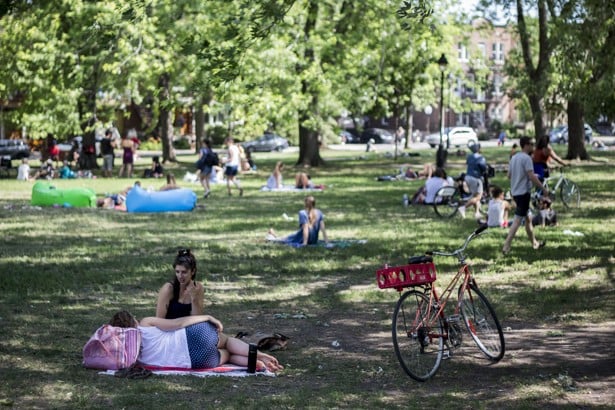
Many attribute this exuberant street life to Montreal’s “European” character. As a mostly French-speaking city in an English-speaking part of the world, comparisons to France seem inevitable. But the reality is that Montreal is just a North American city that didn’t fully succumb to the car culture that wiped out public life in so many other places.
The idea is that streets and public spaces are for people to enjoy. It’s what makes Montreal so interesting. There’s life here
Montreal’s history dates back several centuries. It was once home to an Iroquoian agricultural town named Hochelaga, which was visited by French explorer Jacques Cartier in 1535.
A century later, Hochelaga had disappeared, and a fortified Catholic mission named Fort Ville-Marie was founded by Paul Chomedey de Maisonneuve and Jeanne Mance in 1642. The mission grew into a fur trading hub, and after the British conquered New France in 1760, it eventually became Canada’s economic and industrial hub.
Today, the Montreal area is home to four million people, most of whom live in sprawling suburban neighbourhoods. But its large city centre remains densely populated, defined by stately greystone buildings near historic Old Montreal and walk-up duplexes and triplexes in more outlying areas. With spiralling exterior staircases and wrought-iron balconies, Montreal’s homes seem designed to embrace the outdoors, winters be damned.

The same can be said for Montreal’s transport habits. Montreal has long been considered the best North American city for cycling by Danish bicycle advocacy group Copenhagenize, and Montrealers take to the streets on two wheels as soon as the snow melts. Every April, the city’s fleet of 6,250 Bixi share bikes hits the street, making it particularly easy for locals and visitors alike to get around by bicycle.
“The bicycle is really a tool of freedom,” says Marianne Giguère, a city councillor who oversees cycling issues for the municipal government. Montreal already has more bike lanes and separated cycle tracks than any other city on the continent, and its network is set to expand even more in coming years. “The number of people who get around by bike has really exploded,” Giguère says. “There’s a new record being set every year.”
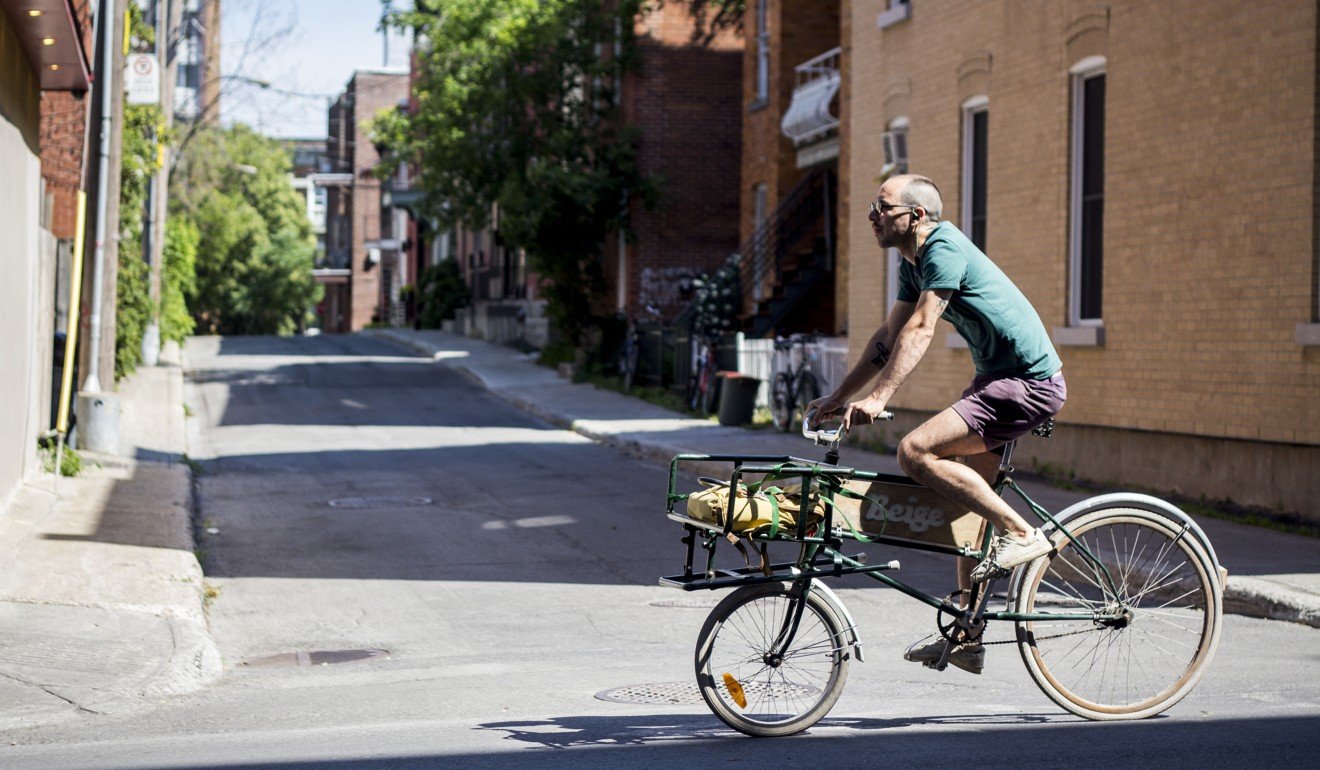
It is hard to say whether the new pop-up spaces are helping drive the trend, or they’re simply responding to it. “It’s all part of the same culture of reappropriating the city’s spaces for people,” Giguère says. “You get around by bike, you enjoy the city, and when you want to stop, it’s easy to stop and lock up your bike. The idea is that streets and public spaces are for people to enjoy. It’s what makes Montreal so interesting. There’s life here.”
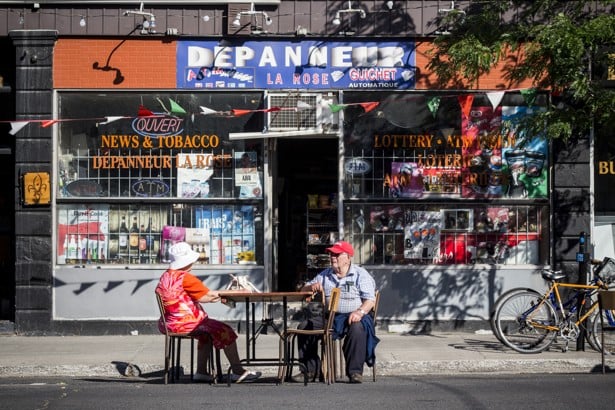
There’s enough life that it’s impossible to take it all in, even after a long day of cycling around. In the heart of the city, the parks, plazas and streets of Quartier des Spectacles are home to a long procession of free outdoor concerts, film screenings and performances. In the former industrial areas of the city’s southwest, the Lachine Canal is lined by a long cycle path dotted by pop-up spaces. These include the Canal Lounge, an old boat that has been turned into a cocktail bar, and Station F-MR, where old trains from Montreal’s metro system have been converted into an art gallery, shop and cafe.
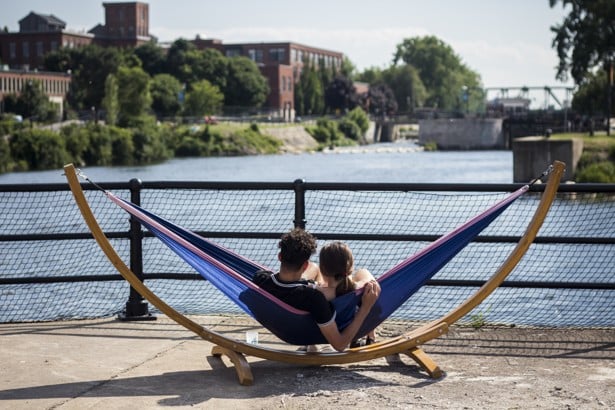
The streets of the city’s old neighbourhoods are occupied by events all summer long. In June, Saint-Laurent Boulevard – known informally as the Main – plays host to the street art Mural Fest, the Fringe Fest and a two-kilometre street fair, all at once. Every July, the local Italian community hosts a feast in honour of San Marziale, giving a stretch of Saint-Viateur Street the atmosphere of a Calabrian village.
Back at Aire Commune, Dang and Tadokoro sit in the shade of an old shipping container, sipping on cold drinks. The space, launched this year, has become a popular gathering spot for the tech workers and designers who work in the former garment district of Mile End. “It has completely changed the area,” Dang says. “Before, after work, people went home or maybe they went to a bar somewhere else. Now they come here.”

A 30-minute bike ride away, the evening is just getting started at the Village au Pied-du-Courant. A drag queen competition throws the crowd into a frenzy. People line up for plates of Haitian food. Families sprawl out on the sand of the urban beach.
Montenegro, a Balkan gem of crystal lakes and soaring peaks
Later, after the last rays of sun have bounced off the steel trusses of the Jacques Cartier Bridge, the crowds filter out and make their way through the Gay Village, where Saint Catherine Street is pedestrianised for the summer and decorated with a canopy of rainbow-coloured balls. A concert is getting underway in the Jardin Gamelin, a pop-up bar in a public plaza. Nearby Saint Denis Street is closed for an outdoor circus festival, its restaurant terraces packed with late diners. The air is warm, the breeze gentle. But the mammoth won’t stay unfrozen forever.
Pop-up spaces to enjoy this summer in Montreal
Getting there
There are no direct flights, but Air Canada, United, Air China, Hong Kong Airlines and Cathay Pacific are among airlines serving Montreal from Hong Kong via a connecting flight.

